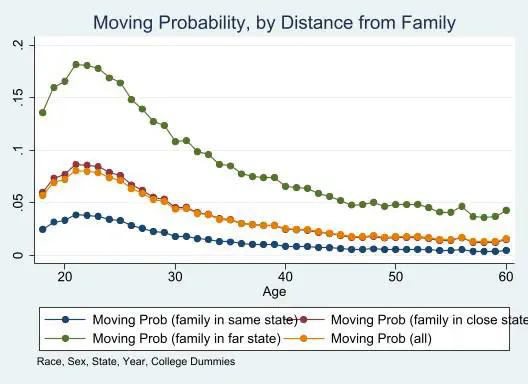Invisible Ties, Internal Flights: the Influence of Non-cohabiting Family on Migration Decisions

Every year, about 1 in 20 Americans move across cities. Extensive research has highlighted relevant frictions in geographic mobility, indicating constraints on individuals’ ability to maximize professional, educational, or investment opportunities. While many migration decisions are driven by financial incentives, a notable proportion are influenced by family-related reasons. Crucially, some beneficial relocations might not occur due to preferences for staying close to relatives. Thus, family structures can either impede mobility, by adding to the costs of moving, or boost gross migration flows, as people relocate to be nearer to extended family members. Our paper is the first to estimate the value of living close to non-cohabiting family members — including parents, adult children, and siblings — and to discuss how much of the reluctance to move can be attributed to such preferences. Our analysis hinges on two primary data sources: the Panel Study of Income Dynamics (PSID), which tracks extended families and records their labor history, wealth, and expenditures, and confidential IRS tax data with intergenerational family linkages, providing a nationally representative longitudinal dataset. We empirically document that familial motives play a pivotal role in understanding frictions in geographic mobility and in decoding migration behaviors. Subsequently, we employ a detailed structural model to ascertain the familial component of moving expenses, which we find to be substantial. Furthermore, our findings indicate that alongside shifts in the geographical spread of job opportunities, alterations in family structures significantly contribute to the secular decline in migration trends.